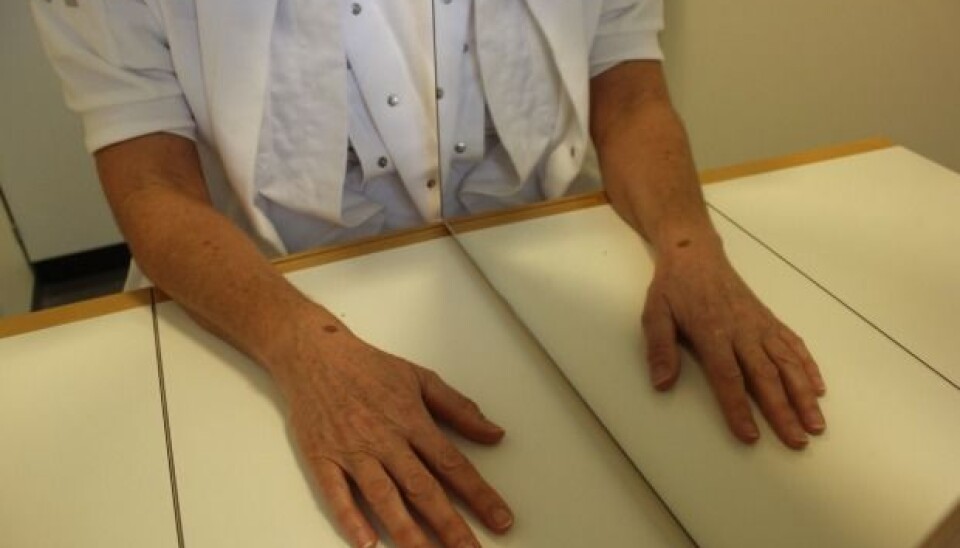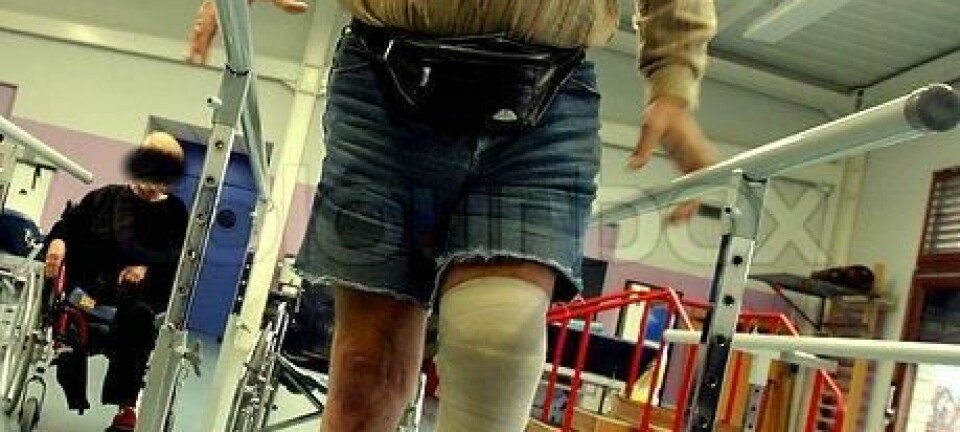
Phantom pain: new research to trick the brain
How do you treat pain in a limb that no longer exists? A Danish researcher is looking at how we can trick the brain into avoiding phantom pains.
Some 60-80 percent of all patients who have a limb amputated experience subsequent pain where the missing limb used to be.
These phantom pains can be excruciating, and currently there are no effective ways of treating them, explains Bo Geng, a postdoc researcher at the Department of Health Science and Technology at Aalborg University, Denmark.
”Studies have shown that only about 30 percent of all amputees can be helped with the existing treatments against phantom pain. The objective of my research project is to develop a new and effective treatment,” says Geng, who is one of 39 young Danish researchers that have been awarded a so-called Sapere Aude grant.
Accidental mirror discovery
To understand Geng’s research project, we need to go back to 1993, when the Indian-born professor Vilayanur Ramachandran received a patient with phantom pains in his office at the University of California, US. The patient had had his arm amputated after a motorcycle accident and had been seriously plagued by phantom pains for about ten years.
if you stimulate the stump of the amputated limb, then the patient can experience it as if the amputated limb is being touched. In other words, it is possible to artificially create an experience of the missing limb being touched.
Bo Geng
The patient felt as if his phantom arm was fixed in a paralysed, clenched spasm, and neither medicine nor surgery could get rid of the pain.
The professor, who happened to have a mirror lying in his office, was suddenly struck with an idea.
Pains suddenly vanished
Ramachandran positioned the mirror perpendicularly in front of the patient’s chest, so that his remaining arm was reflected in the mirror. This meant that from the patient’s point of view it suddenly looked as if he had two arms again.
”Then I said, ’Move your real fingers while looking into the mirror’ so as to get the visual impression that the phantom limb was moving. And then, amazingly, the patient said, ‘Oh my God – my phantom limb is moving again’. And the clenched pain was relieved,” Ramachandran explained in a TED Talks lecture.
This way of tricking the brain into relieving phantom pains has subsequently spread to many parts of the world and has become known as ‘mirror therapy’.
Refining mirror therapy
Several researchers have, however, pointed out that the mirror does not provide a miracle cure against phantom pains, and studies have also shown that the treatment does not work for all patients.
This is what Bo Geng wants to address. In her research, she aims to refine the mirror therapy so that the patient not only sees the amputated limb in the mirror; she also aims to trick the brain into physically feeling the presence of the phantom limb.
“This is a common phenomenon: if you stimulate the stump of the amputated limb, then the patient can experience it as if the amputated limb is being touched. In other words, it is possible to artificially create an experience of the missing limb being touched,” says Geng.
Electric shock to provide feeling in amputated limb
She explains that she will try to stimulate the stump of the amputated limb with tiny electrical shocks.
The biggest challenge will be to make the visual impression – i.e. what the patient sees in the mirror – to correspond with what the patient experiences form the electrical stimulation.
------------------------
Read the Danish version of this article at videnskab.dk





